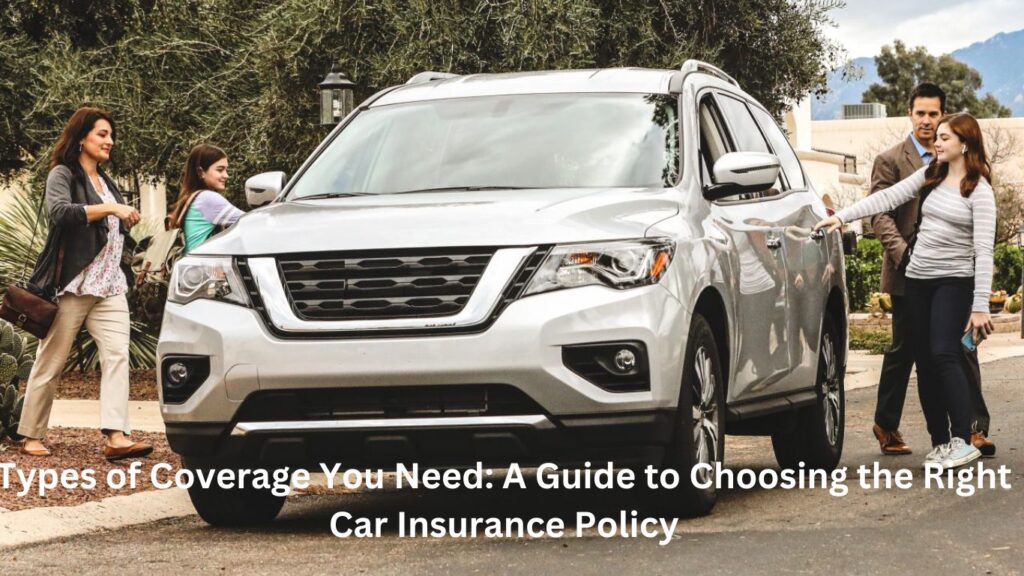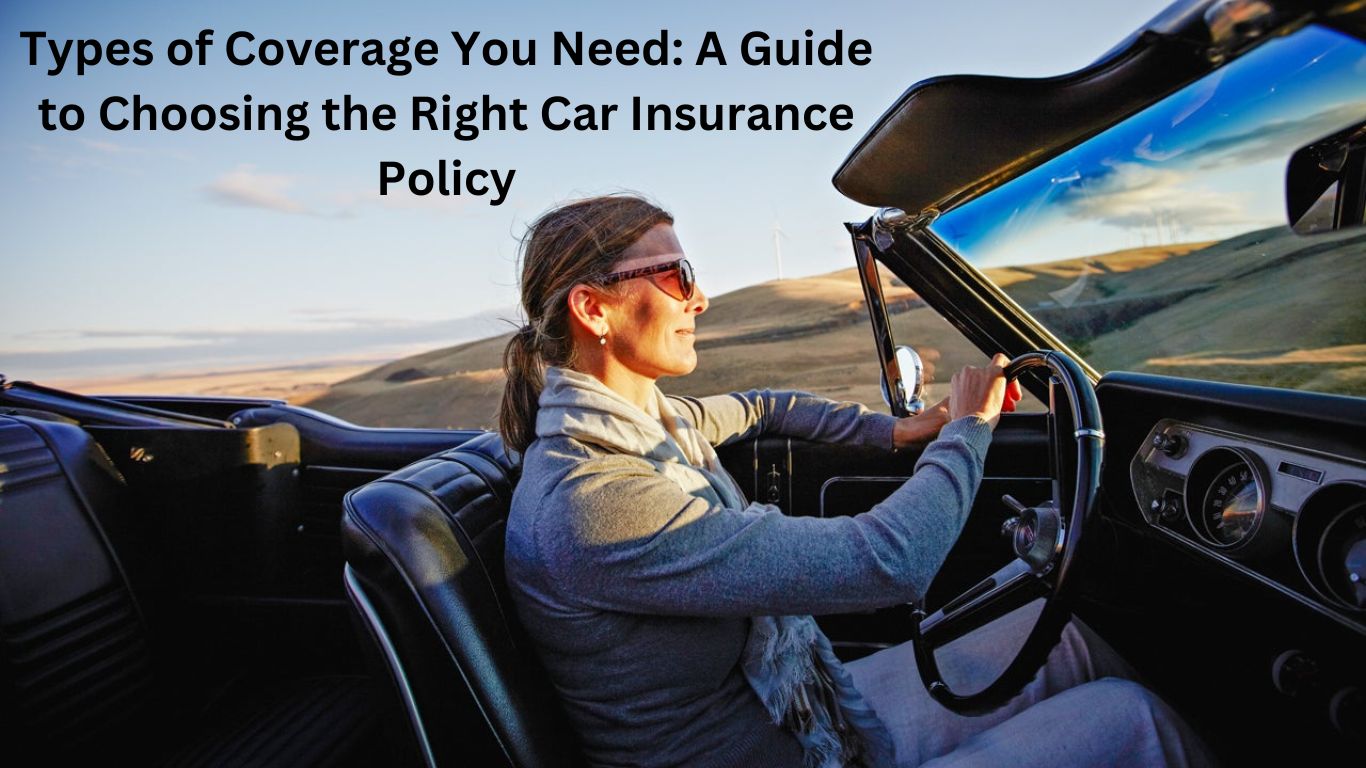Types of Coverage You Need: A Guide to Choosing the Right Car Insurance Policy. Vehicle protection isn’t simply a lawful prerequisite in many spots; it’s likewise a pivotal monetary security net that safeguards you from massive costs if there should be an occurrence of mishaps, robbery, or different episodes. Picking the right vehicle insurance contract includes understanding the different sorts of inclusion accessible and choosing choices that line up with your necessities and financial plan. Types of Coverage You Need: A Guide to Choosing the Right Car Insurance Policy. This guide gives a far-reaching outline of the sorts of vehicle insurance inclusion, their advantages, and factors to consider while picking the right contract for you.
1. Obligation Protection
Overview: Obligation insurance is commonly the underpinning of any vehicle protection contract and is obligatory in many states. Types of Coverage You Need: A Guide to Choosing the Right Car Insurance Policy. It covers harm you cause to others in a mishap where you are to blame.
- Real Injury Liability: This inclusion pays for clinical costs, lost compensation, and lawful expenses of the other party engaged with the mishap.
- Property Harm Liability: It covers the maintenance or substitution expenses of vehicles or other property harmed in a mishap you caused.
Why You Want It: Responsibility protection shields your resources and reserves funds from expected claims and monetary liabilities if you’re answerable for harming somebody or harming their property in an auto crash.
2. Impact Inclusion
Overview: Impact inclusion repays you for harm to your vehicle brought about by a crash with another vehicle or item, paying little mind to blame.
- Inclusion Details: It commonly takes care of the expense to fix or supplant your vehicle up to its real money esteem (ACV), less your deductible.
Why You Want It: Impact inclusion is fundamental on the off chance that you have a fresher or more important vehicle that would be expensive to fix or supplant personally in the event of a mishap.
3. Thorough Inclusion
Overview: Far-reaching inclusion shields your vehicle from non-impact occurrences that might cause harm or misfortune.
- Covered Incidents: This incorporates robbery, defacement, fire, cataclysmic events (e.g., hail, floods), falling articles, and crashes with creatures.
- Inclusion Details: Like impact inclusion, exhaustive settles up to the ACV of your vehicle less your deductible.
Why You Want It: Exhaustive inclusion gives monetary security against a great many dangers that could harm or add up to your vehicle, particularly in regions inclined to catastrophic events or high burglary rates.
4. Uninsured/Underinsured Driver Inclusion
Overview: Uninsured/Underinsured Driver (UM/UIM) inclusion safeguards you on the off chance that you’re in a mishap with a lacking or no driver protection.
- Substantial Injury: Covers clinical costs for yourself as well as your travelers if the to-blame driver is uninsured or underinsured.
- Property Damage: Covers fix or swap costs for your vehicle if the to-blame driver can’t pay.
Why You Want It: UM/UIM inclusion guarantees you’re not left monetarily helpless on the off chance that you’re in a mishap with a satisfactory driver protection inclusion to repay you for harm.
5. Individual Injury Insurance (PIP) or Clinical Installments Inclusion
Overview: PIP or Clinical Installments inclusion pays for clinical costs coming about because of a fender bender, paying little mind to blame.
- Covered Expenses: Incorporates hospital expenses, lost wages, and memorial service costs for yourself as well as your travelers.
Why You Want It: PIP or Clinical Installments inclusion gives prompt monetary help to clinical costs after a mishap, paying little mind to who is to blame, and can supplement health care coverage deductibles.

6. Hole Protection
Overview: Hole protection covers the distinction between what you owe on a vehicle credit or rent and the ACV of your vehicle if it’s added up to or taken.
- Inclusion Details: Helps take care of the rest of your credit or rent in the event of a complete misfortune when the sum owed is more than the vehicle’s worth.
Why You Want It: If you owe more on your vehicle than its ongoing worth, hole protection guarantees you’re not left taking care of a credit or rent for a vehicle you never again have.
7. Rental Repayment Inclusion
Overview: Rental repayment inclusion repays you for the expense of a rental vehicle while your vehicle is being fixed after a mishap.
- Inclusion Details: Normally has a day as far as possible and a most extreme complete payout.
Why You Want It: If your vehicle is in the shop for fixes after a mishap, rental repayment inclusion guarantees you have an impermanent vehicle to use without causing extra personal costs.
Picking the Right Inclusion Levels
While choosing inclusion for your vehicle insurance contract, consider the accompanying variables to guarantee you have satisfactory assurance:
- State Requirements: Comprehend the base inclusion prerequisites ordered by your state. While these are the lawful essentials, they may not give adequate security in a serious mishap.
- Vehicle Value: Think about the ongoing worth of your vehicle. Fresher or more significant vehicles might warrant more elevated levels of inclusion to safeguard against significant fix or substitution costs.
- Monetary Situation: Evaluate your capacity to cover personal costs like deductibles and consider how much monetary gamble you’re willing to expect if there should arise an occurrence of a mishap.
- Driving Habits: Assess your driving propensities and the probability of mishaps or harm. Factors, for example, everyday drive distance, driving circumstances, and area can impact your protection needs.
Understanding Strategy Cutoff Points and Deductibles
- Strategy Limits: The greatest sum your insurance agency will pay for a covered case. Higher strategy restrictions commonly mean more exhaustive inclusion however may result in higher expenses.
- Deductibles: The sum you should pay personally before your protection inclusion kicks in. Picking a higher deductible can bring down your charges however expands your forthright costs in the event of a case.
Evaluating and Contrasting Protection Statements
- Shop Around: Acquire statements from various insurance agency to think about inclusion choices, charges, deductibles, and client audits.
- Strategy Exclusions: Read the fine print of every approach to comprehend avoidances and limits that might influence inclusion for explicit episodes or conditions.
Last Contemplations
- Pack Policies: Think about packaging vehicle protection with other protection items (e.g., home protection) for likely limits and improved administration.
- Audit Regularly: Intermittently survey your protection inclusion to guarantee it addresses your issues as conditions, for example, vehicle worth or driving propensities, may change after some time.
End
Picking the right vehicle insurance contract includes understanding your inclusion needs, surveying likely dangers, and choosing choices that give sufficient assurance without pointless expenses. By finding out more about the kinds of inclusion accessible and taking into account factors, for example, state prerequisites, vehicle worth, and individual monetary circumstance, you can go with an educated choice that shields your monetary prosperity in the event of mishaps or unanticipated occasions out and about. Keep in mind, that protection isn’t just about gathering lawful necessities but also about getting true serenity realizing you’re safeguarded when you want it most.
